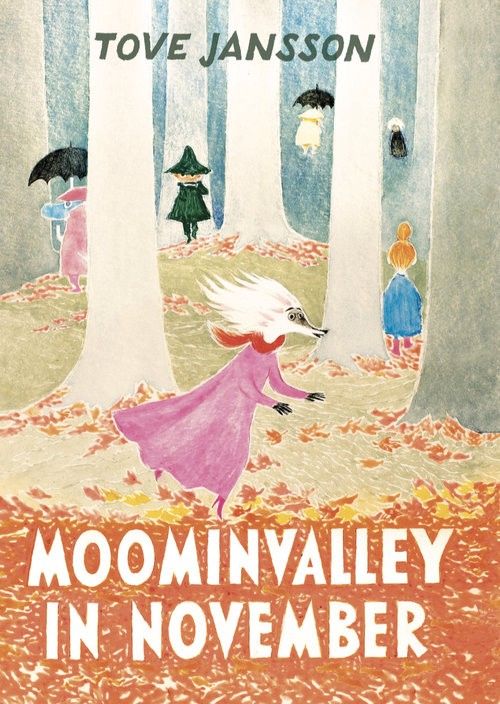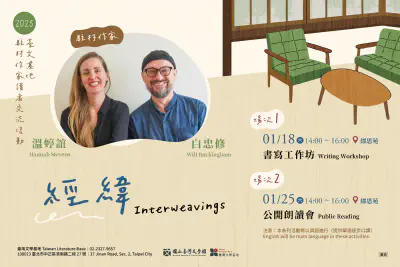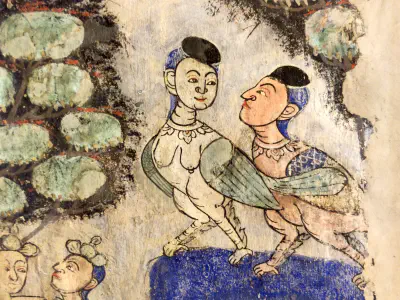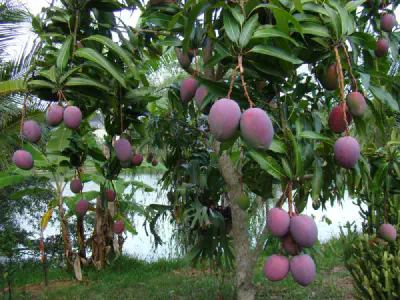It is a story where nothing happens. Nothing other than waiting, and hope, and friendship, and the fear of living in a world we only partly understand, and a sense that life could be somehow different, if we could only work out how, or could drum up the courage to change things.
Tove Jansson’s Moominvalley in November was published in Swedish in 1970. In the original Swedish, it was called Sent i november, or “Late in November.” It was the last of Jansson’s books about the Moomins—a little family of round-snouted trolls who lived in a remote valley.
At the centre of Jansson’s Moomin books stands the Moominhouse, the bustling hub of a loose-knit community of strange creatures: adopted family members, fleeting visitors, wandering philosophers and troublesome hangers-on.

Sometime around my final year in elementary school, I became entranced by Jansson’s Moomin books. The universe about which Jansson wrote felt immediately familiar. I was brought up in a vicarage in rural Norfolk, in the east of England. I, too, lived in a home that, like the Moominhouse, was at one and the same time both draughty and expansive. It was a place where people were always turning up unexpectedly, where sometimes—as Jansson wrote in Finn Family Moomintroll— “unexpected and disturbing things used to happen, but nobody ever had time to be bored, and that is always a good thing.”
Jansson’s fictional universe is populated by an array of creatures that are a testament to her hospitable vision of human diversity. Fillyjonks are highly strung, neurotic and obsessed with cleaning. Hemulens are slow-moving and obsessive. They are fond of stamp-collecting and rules, and they make excellent park-keepers. The chilly Groke — the most terrible of monsters, one of the few creatures who is never invited in—freezes everything she touches, and on the ground where she has sat, nothing grows again. The wanderer Snufkin guards his solitude. He wanders alone through the mountains and valleys with his tent and his mouth organ. Little My, the Mymble’s daughter, is adopted by the Moomin family. She is tiny, anarchic, and amoral. The Mymble herself, seemingly forgetful that she even has a daughter, is untroubled by life. Free of existential anxiety, she spends hours combing her hair, musing on how delightful it is to be a Mymble. A muskrat philosopher snuffles in and out of the stories, reading books called things like The Uselessness of Everything and pontificating on the miseries of life. And at the heart of all of this diversity is the Moomin family: the capable and unflustered Moominmamma; the would-be adventurer Moominpappa, who spends hours writing his interminable memoirs; and the inquisitive, sensitive hero Moomintroll.
I loved Jansson’s stories for their high drama. The things that happened in Moominvalley were often unexpected and disturbing. Sometimes they were even apocalyptic. There were floods and comets, unnamed threats that loomed in the darkness. There was an ever-present possibility of—real or imagined—catastrophe. But what made Jansson’s universe so compelling was the way it was pervaded by a spirit of friendship and hospitality. Jansson’s books seemed to be rooted in the insight there were many ways of living, none of them absolutely right or absolutely wrong. And the art of living was the art of navigating difference, finding ways of living alongside others who are not like us (even Grokes).
Of all Jansson’s books, Moominvalley in November is the strangest. And it is strange because this is the one Moomin book where the Moomin family do not appear. Moominvalley in November is, as Jansson’s biographer Boel Westin writes,
a story about a family that, like Godot, is constantly mentioned but never appears on the stage. It tells of a valley with a garden full of flowers, with white lace curtains that flap slowly in the summer wind, with memories of apple blossom, windswept green grass and sunbeams, and of a family. In the present, the story describes a valley full of rain, mist, wet leaves and the dark colours of autumn, and tells of departure, farewell and melancholy.
It is autumn when a number of Jansson’s peripheral characters — Snufkin, a small orphan called Toft, a Fillyjonk, a Hemulen searching for a different way of living, a senile grandfather wanting to relive his youth, the Mymble — converge on the Moominhouse. They are searching for the community and friendship which they know they will find there. But when they arrive, they find that the family has gone. Moominmamma, Moominpappa, Little My, Moomintroll—all of them are away at sea, and the house stands empty.
So as this strange, empty November rumbles on, they make do as best they can. The Fillyjonk tries, not wholly unsuccessfully, to fill Moominmamma’s shoes by playing host. Toft hides himself away with a science book about protozoan Nummulites, which feeds his increasingly wild and terrifying fantasies. Snufkin worries away at his creative pursuits, trying to track down five bars of a half-forgotten tune. The Hemulen, smelling “of old paper and worry”, wonders if he should become a sailor.
And finding themselves unexpectedly living together, these divergent characters try their best to get on. They argue and fight, then they make up again. And they long for the return of the Moomin family who will make everything all right.
By the time Jansson wrote this ninth and final book in her Moomin series, her Moomin stories had made her world-famous. But she was also tired out. After spending a quarter of a century in Moominvalley, Jansson felt creatively trapped. As a writer and an artist, she wanted to try something new. She was, her biographer Boel Westin writes, finding it “harder and harder to write for children.”
When Jansson finished the first draft of her book, she was dissatisfied. In a letter to her former partner, Vivica Bandler, written in 1969, Jansson complained that her first draft was no good and that it had been turned down by her publishers. She had spent a frustrating summer dealing with guests and visitors. Now, she wrote, she wanted nothing more than to immerse herself “in the dismal decay of autumn before the snow arrives.”
For Jansson, art was always a struggle between the pleasure of creating something new and a sense of duty. And she was afraid that if she didn’t get away to immerse herself in the melancholy of autumn, she would lose the entire book, and the next draft would be merely dutiful.
But Jansson took this frustration and melancholy and turned it into something extraordinarily compelling. Moominvalley in November is the strangest of children’s books. The Moomin family never reappear in the frame of the story. And although Jansson knew that her readers would be longing to glimpse them—just as Toft and Snufkin and the Hemulen and the Fillyjonk all longed for them—she chose not to give in to this longing. Because sometimes, life doesn’t give you what you want.
Towards the end of the book, the incidental characters give up their waiting. They drift away, back to their own lives and worlds. And maybe their lives have been a little changed by this strange period of waiting in the empty, autumnal Moominhouse, or maybe they haven’t. But you can’t wait forever.
The Mymble wanders off at the first sign of snow. The Hemulen gives up on his dreams of reinventing himself and goes home. The Fillyjonk cleans the Moominhouse and then heads home, her work done. The grandfather goes into hibernation for the winter and is not heard from again. And Snufkin, after rediscovering those lost five bars of music on the beach among the driftwood, breaks camp and leaves.
In the end, only the orphan Toft is left in the house. He heads down to the shoreline and waits for the family to return, however long it takes. Jansson writes:
The whole sea lay spread out in front of him, grey and streaked with even white waves right out to the horizon. Toft turned his face into the wind and sat down to wait. Now, at last, he could wait.
And then, by some miracle, he sees something on the horizon. A glimmer of hope in the November gloom.
Toft sat high up on the mountain for several hours looking at the sea. Just before the sun went down it threw a shaft of light through the clouds, cold and wintry-yellow, making the whole world look very desolate. And then Toft saw the storm-lantern Moominpappa had hung up at the top of the mast. It threw a gentle, warm light and burnt steadily. The boat was a very long way away. Toft had plenty of time to go down through the forest and along the beach to the jetty, and be just in time to catch the line and tie up the boat.
And there, the book ends.
Moominvalley in November is a story where nothing happens, where there is only waiting, where the main characters never appear. Then, as now, I found it a frustrating read. Aged ten or eleven, after finishing the book, I read it a second time, in case I’d missed something. Then I read it a third time. And as I read and re-read, Jansson’s strange storytelling spoke to me. It spoke to my solitude, to my own sense of what life was or could be, to my own complicated sense of what it meant to be alone, or to long for a future that might never happen, or to find a pathway in the world, grappling with the strangeness that is ours, all of us, by virtue of being human.
And this, in the end, is the genius of Moominvalley in November. It talks about something few other books for children dare to say, or not in this way. It talks about how sadness and loss, melancholy and grief are a part of what it means to love and to hope. It talks about the essential strangeness of being human. It talks about what it means to get on with others who are different from us. And it talks about how we make sense of absence—so that even in our longing, our frustration, and our sadness, it is possible to find both meaning and comfort.
References:
Tove Jansson, Moominvalley in November (Puffin Books 1971)
Tove Jansson, Finn Family Moomintroll (Puffin Books 1973)
Boel Westin, Tove Jansson: Life, Art, Words (Sort of Books 2007)
Quotes from Tove Jansson’s letters come from Boel Westin and Helen Svensson, Letters from Tove (Sort of Books 2019)
Try this lovely little blog on Tove Jansson’s descriptions of autumn.
Cover image Autumn by Carl Larsson. Public domain via Wikimedia Commons.



